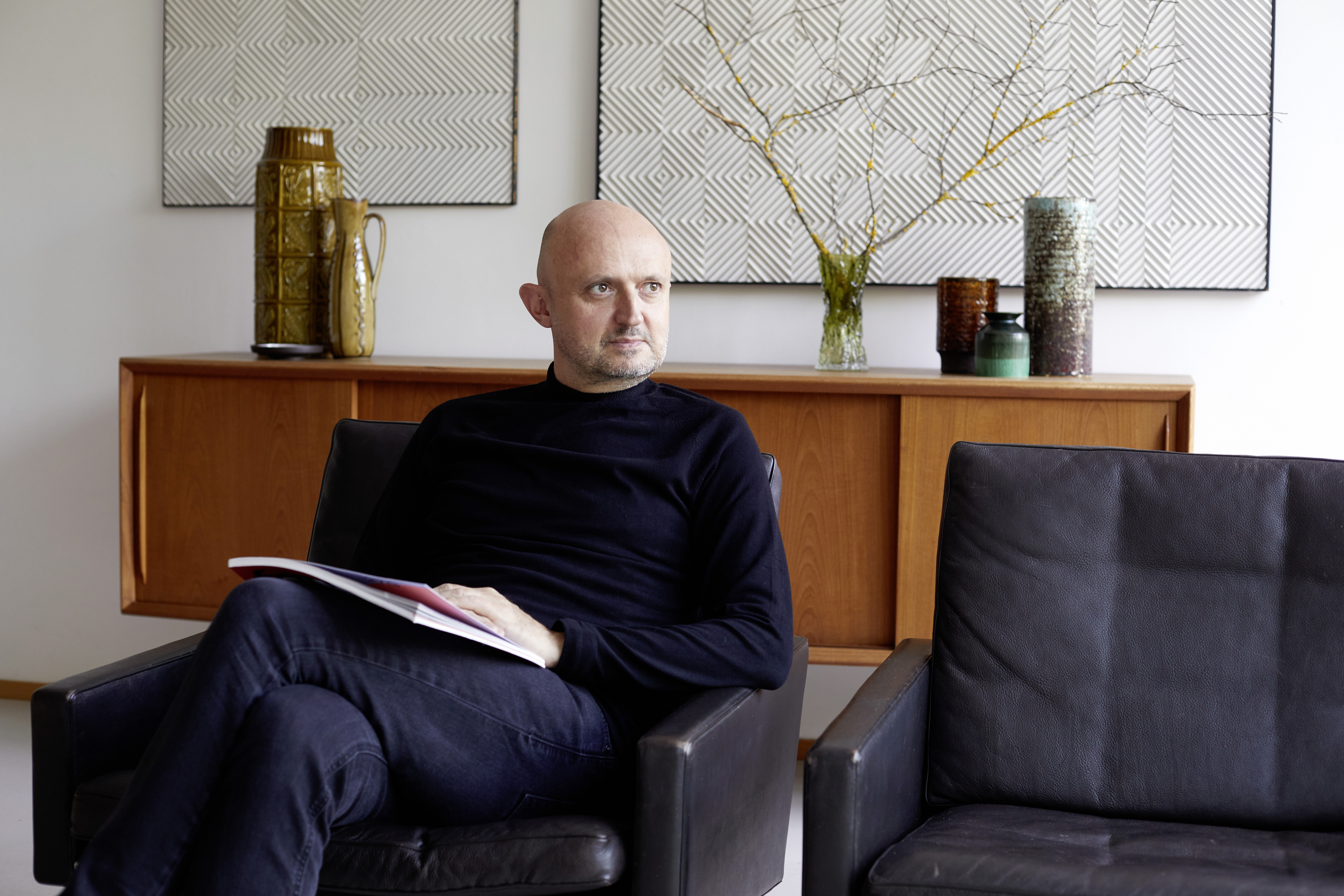Mazda Motor Europe Design Director Jo Stenuit talks about his sources of inspiration, what influences his work and how design changes with electrification of vehicles.
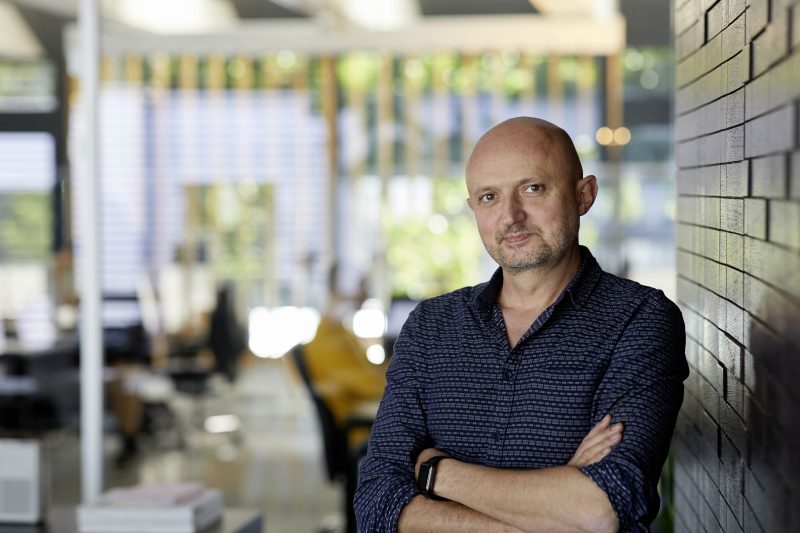
You’ve been with Mazda for more than 20 years. How would you describe the development of Mazda designs during this time?
There have been a number of different design philosophies over the past decades: Tokimeki, Nagare and now Kodo. Although they certainly differed from one another, the fundamental goal was always the same: to demonstrate that our cars are fun to drive. The biggest change in the past ten years is that we have striven for increasingly artistic and premium forms of expression. This means we’ve returned to the foundations of good automobile design. The numerous awards confirm that our customers and fans around the world understand and appreciate this approach. And it wouldn’t have been possible without collaboration of Mazda’s design studios in Japan, Europe and the U.S.
“In a world that is turning ever faster, where design trends change constantly, Mazda offers a timeless, sophisticated and well-articulated alternative.”
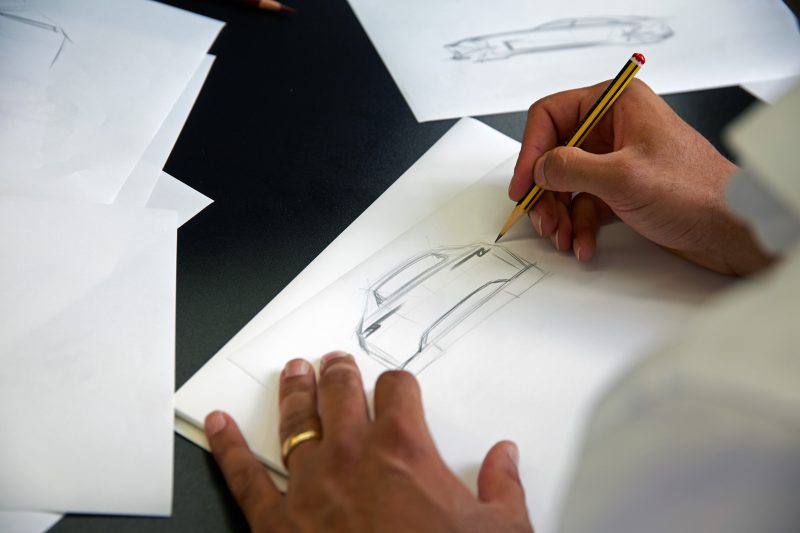
How would you describe Kodo’s latest evolution?
Attention to detail is an essential factor. The second phase of Kodo revolves around purity and coming up with emotional designs using as few elements as possible. And that can only be achieved if these elements are crafted to the highest standards. When designing exteriors, we spend a lot of time getting all elements into balance and harmony, making sure reflections off the vehicle are as enlivening and as flawless as possible. In the cabin, we strive to make the experience as inviting and positive the first time our customers get into the car as it is in the years thereafter. We arrange the interiors with precision, limiting the number of design elements and refining materials to perfection. But outstanding design goes beyond the vehicle itself. Together with our colleagues from Brand Style, Marketing and Communications, we have managed to establish an environment for our cars and our brand that reflects Mazda’s premium aspirations. In doing so, we’ve painstakingly reconciled text, graphics, photography and event architecture. This attention to detail demonstrates the passion of our designers as well as our faith in the products and the Mazda brand.
How would you characterise Mazda’s progression toward high-end design?
It is the logical consequence of our quest for a distinctive product and brand experience. In a world that is turning ever faster, where design trends change constantly, Mazda offers a timeless, sophisticated and well-articulated alternative. Beauty only works when created with emotion, love of detail and a high degree of both confidence and humility.
Dark blue is all the rage this season for interior design. Does this also apply to car interiors?
Honestly, we’ve tried dark blue. But we’re fundamentally cautious about replicating seasonal trends in our vehicles. We need to think much longer term. That said, cork is currently very popular and the material is a good fit for Mazda, which began as a cork maker. In any case, there is a major trend towards quality, and we’re looking methodically for quality materials with a special focus on sustainability. The Mazda MX-30 is partly made from up to 100% recycled materials. Another trend revolves around the technology in cars. There is already so much information. We need avoid sensory overload. Back in the 1980s, some concept car interiors were beginning to resemble Christmas trees, but that didn’t last very long.
What then should a car interior offer?
To make people immediately feel comfortable and not overwhelmed. Attractive but restrained materials and colours are fundamental here. The cabin needs a simple design exhibiting high quality. That’s all. Old cars do it well: they’re honest and simple. I have a 1971 Datsun. It’s so minimalistic, the only equipment inside is a radio. It calms the soul. I think we need to go back to this. We’re clearly doing so at Mazda: Our interiors are very straightforward.
How liveable should a car interior be?
Very much so, in my opinion. It should be very comfortable, like the MX-30. It’s reassuring to sit in such an environment. Electric cars will reinforce this. Since they drive slower, generally speaking, the cabin becomes more important. It should therefore be a pleasant and relaxed space. We’re seeing the same thing more and more on self-driving concept cars. Their cabins look like living rooms.
“Electric powertrains have changed the structure of the vehicle.”
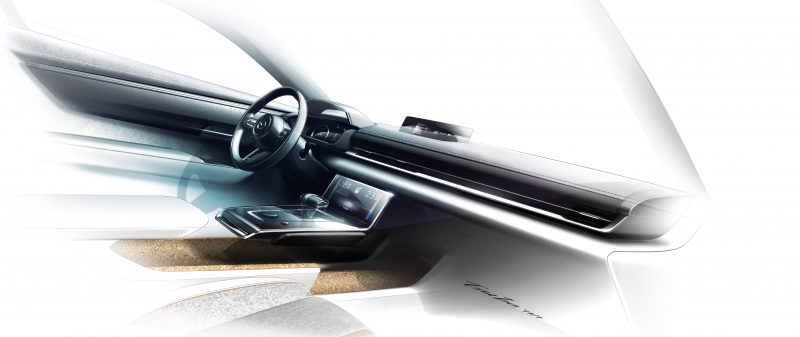
How does one explore new ideas? And how can I picture the process of designing a vehicle, specifically an electric model?
As so often, it starts with a blank sheet of paper. We jot down our initial ideas based on our everyday perceptions as designers, and of course the market and technical data supplied by other departments. The first electric cars launched looked very futuristic, as if to say “look, here is something new!” Today they no longer need to shock people – they’re becoming more normal.
Electric powertrains, however, have changed the structure of the vehicle. Previously, the radiator was at the front, and it gave the car a face. But that is going to change. Now we have motors integrated into the wheels, which leaves a lot of free space to design something new, using glass for example. Based on the body, everyone sees that it’s an electric car. Otherwise, designing a vehicle – whether electric or internal combustion-powered – starts with the question: “What do people need in this car?” That is our job.
What else is changing?
Most of the changes are taking place in the cabin. The feeling is different in an EV; you drive them differently. The Mazda MX-30 is a completely different world than the Mazda3, whose interior is focused above all on the driver. The MX-30 cabin is much more peaceful, relaxed and balanced. The interior also seems more reserved, attentive and open. Like an extension of the living room.
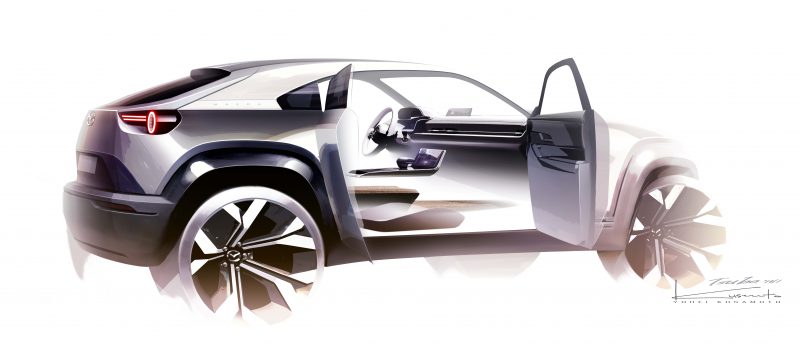
How does one create a relaxed cabin atmosphere?
Here too it begins with an empty space. Then we look at what is really necessary, making sure not to overdo it. We’re very minimalistic. Other brands often try to put as much as possible into the cabin, but that’s not our way at Mazda. Too much stuff only agitates people and overwhelms them. And such abundance means there are features nobody uses. Another point is that technology evolves faster than people can adapt to it. As a result, you don’t always need to have so many new things in the car. For us, driving fun remains the top priority, and this also applies to electric models.

